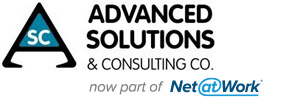Enterprise Resource Planning (ERP) software systems are an invaluable management tool for maximizing productivity and identifying bottlenecks in your company’s business practices. However, industries are changing and evolving all the time; what may have been considered efficient 10 years ago seems clunky and tedious now. Naturally, there will come a time when squeezing every drop of efficiency out of your existing ERP solution just isn’t cutting it. Identifying when and why your current ERP software is outdated is crucial to keeping your business competitive.
A simple method of knowing when it’s time to upgrade is by taking the cost of maintaining and running your current ERP solution and comparing it to the money value it provides your business every year. Add up the original cost of your ERP software, the initial cost of hardware and network systems needed to use the system, the cost of training your team, and the annual maintenance and upkeep costs to keep it running. Now calculate how much money you ERP system has generated annually for your company over the past several years.
If you chart these two figures, you’ll see a huge uptick in costs at the very beginning due to hardware installation and training costs. Over time, you’ll see the company’s income rise thanks to the added productivity and analytical tools provided by the ERP software. When the money you’re spending on keeping your ERP software running begins to outweigh the value it’s providing to your company for several years in a row, you know it’s time to upgrade your ERP solution.
How Modern Advances in Technology Have Affected the Useful Life of ERP Systems
ERP software development and the ERP software industry have evolved by leaps and bounds in the past quarter-century. The history of the ERP software industry is filled with the names of slow-moving developers that failed to keep their ERP solutions up-to-date as the needs of their clients warped and changed with time. If the needs of your business are constant, an ERP provider that can keep their business afloat and actively supports their software and hardware could potentially provide you with ERP software that has an infinite lifespan.

An ERP solution that is never obsolete is often too good to be true; in most cases an upgrade is always somewhere down the road. However, there are ways you can extend the life of your ERP software. Pay for any support and upgrade plans your ERP software provider offers. A good ERP provider is constantly working on their product, fixing bugs and improving features. The slightly higher annual cost will be worth it in the long run when newer and better versions of the software become available, allowing you to take full advantage of brand new features, bug fixes, and other software changes.
Optimizing Internal Processes for Your ERP Software
Some of these updates and software changes can be significant. You may discover some of your internal processes need to be upgraded to properly utilize your new software. When updating your ERP software, be sure to read the revision notes to understand what changes have been mad and how they affect your business processes. After every major update, you should:
- Make sure your existing infrastructure isn’t outdated. A slow ERP might have nothing to do with the software at all! Make sure your supporting infrastructure is capable of supporting your chosen ERP solution and any new features an update might introduce.
- Improve your processes with third-party tools. External tools developed by third-parties that can help you keep your processes working optimally are available. ERP providers only have the time and workforce to implement so many essential features. There’s an entire community of developers dedicating their time to creating custom plug-ins – you might even find one that fixes your specific problem!
- Take advantage of business intelligence and workflow tools and always keep an ear to the ground for new practices or developing technologies that can help you make optimal choices faster.

